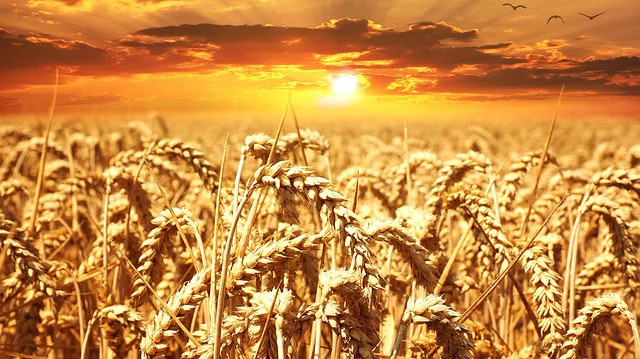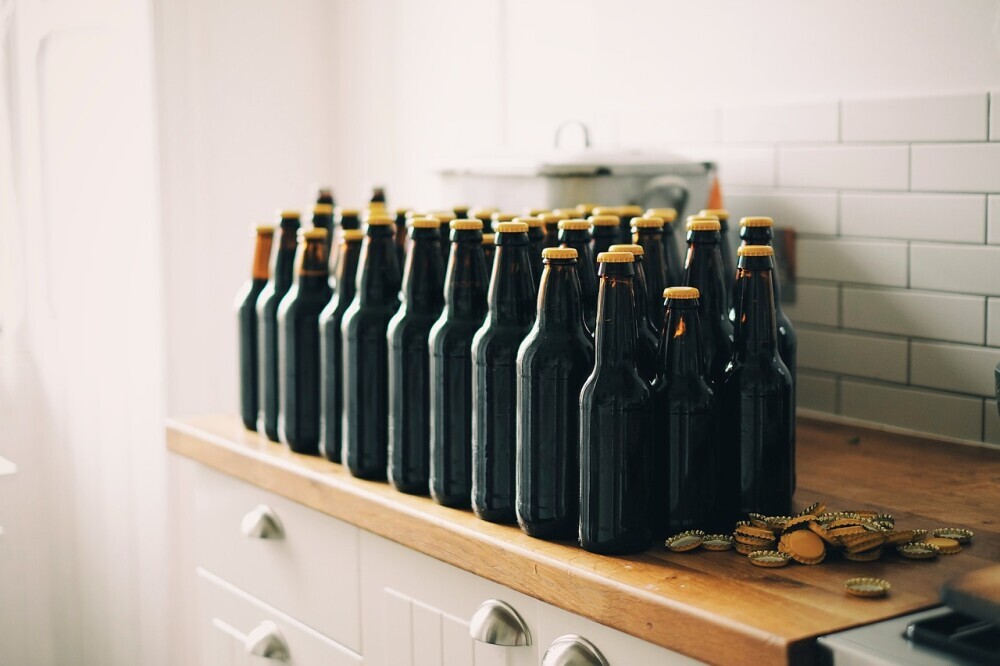Craft Beer Pricing: Unveiling Quality, Process, Value
- Craft beer prices are higher due to the use of high-quality ingredients, brewing techniques, and small batch production which drive up production costs.
- The standard of raw materials used in brewing, such as high-quality malts and hops, influences craft beer prices and is necessary for a better flavor profile and superior taste.
- The level of technology employed impacts production speed and efficiency and influences pricing. Purchasing or leasing equipment such as tanks for fermenting beer or kegs for serving brews is a substantial capital investment for the craft beer industry.

Introduction:
Craft beer is a unique industry that aims to deliver exquisite quality to beer enthusiasts, but its high prices are a source of curiosity for many.
Craft beer, though expensive, continues to fascinate beer lovers who enjoy its unique taste and high quality. Understanding the reasons behind the high prices of craft beer requires a more nuanced approach to the industry.
In short, every factor that makes craft beer exceptional, from the use of premium ingredients to the small scale of production, contributes to its elevated prices.
Additionally, the lack of economies of scale and the higher cost of raw materials also affect the final cost, making craft beer a luxury product that few can afford.
Nonetheless, by investing in seasonal beer, which often uses local ingredients and is less expensive due to lower production costs, and buying in bulk, these expenses can be significantly reduced.
The ultimate secret to understanding craft beer prices is to appreciate what makes it so special.
Understanding the Craft Beer Industry: The cost of producing craft beer is relatively higher than traditional brews due to the use of high-quality ingredients, brewing techniques, and small batch production.
Moreover, navigating stringent licensing regulations make getting into the craft beer business difficult for entrepreneurs.
The craft beer industry demands high-quality ingredients, advanced brewing techniques, and small batch productions, resulting in relatively higher production costs compared to traditional brews. However, the stringent licensing regulations for entrepreneurs make entering the market even more challenging.
Despite the challenges, craft breweries continue to flourish due to the unique flavors offered, unmatched quality, and customer demand.
Factors Affecting Craft Beer Prices:
Craft beer enthusiasts often wonder why they have to pay such a premium to indulge in their favorite beverage.
In my journey of exploring craft beer, I have come to realize that the pricing is influenced by numerous aspects, but the quality of ingredients and the production process are the most significant contributors.
The quality of malts and hops used in the brewing process and the production process’s level of technology significantly impacts the price point of the beer.
In this upcoming section, we’ll explore these different factors and understand how they make craft beer so expensive.
Quality of Ingredients:
Craft beer prices are influenced by various factors, and one of the most significant factors is the standard of raw materials used in brewing. High-quality malts or hops might cost more but are necessary for a better flavor profile and superior taste.
Craft beer prices are influenced by a variety of factors, including the quality of ingredients used in brewing.
High-quality malts or hops might be necessary for a better flavor profile and superior taste, but they also cost more than lower-quality alternatives.
This makes it challenging keeping craft beer prices in line with traditional brews.
Additionally, navigating stringent licensing regulations can make it difficult for entrepreneurs to enter the craft beer industry and succeed.

To produce premium craft beers that stand out from traditional brews, brewers will often use higher quality raw materials. This is because these materials can offer unique flavors and aromas that traditional beers lack.
By using high-quality malts or hops, brewers can create an intricate balance between the bitter, sweet, and fruity notes that are typical of most craft beers.

Purchasing or leasing equipment such as fermenting tanks or kegs also adds to the cost of producing craft beer.
While this process may seem like an unnecessary expense to some consumers, it is vital to production speed and efficiency, which affects pricing.
Consumers should consider investing in premium craft beers due to their unique flavor profiles crafted using high-quality raw materials.
Supporting local economies and entrepreneurs is another added benefit when purchasing craft beers over mass-produced alternatives.
As long as premium ingredients are being used in the brewing process to create a better-tasting product for consumers.
Craft beer equipment: where your passion and bank account collide.
Production Process and Equipment:
The level of technology employed impacts production speed and efficiency which in turn affects pricing.
Purchasing or leasing equipment such as tanks for fermenting beer or kegs for serving brews, among other associated pieces is a substantial capital investment.
Craft beer production requires substantial investment concerning equipment and technology, making it relatively more expensive than traditional brews.
The quality of ingredients used further influences the cost of craft beer. The brewing process itself has many factors affecting the price of final products.
These factors include the level of technology employed in production as it impacts speed and efficiency, which further influences pricing.
Purchasing or leasing equipment such as fermenting tanks or kegs for serving is also a substantial capital investment, contributing to the cost of craft beer.

In producing high-quality craft beer, brewers need to use high-tech equipment to attain superior quality.
Equipment expenses vary with different types of breweries concerning size and product output per cycle.
For instance, large breweries necessitate bigger tanks that can produce more beer with each batch, whereas small breweries require smaller tanks producing significantly less output per batch.
Thus, small scale brewers tend to incur higher costs than larger ones as they usually rely on a limited amount of brewing equipment.
Factors affecting pricing levels in craft beers are diverse- but ultimately depend on the producer’s choice concerning brewing equipment used and level of production technology adopted.
Therefore data shows that the level of technology employed impacts production speed and efficiency which in turn affects pricing – purchasing or leasing equipment such as tanks for fermenting beer or kegs for serving brews, among others is a substantial capital investment.
Investing in premium beers offers unique flavors and aromas compared to traditionally brewed lagers and mass-produced commercial brands.
Consumers should consider benefits like higher quality raw materials- hops and malts; local support from nearby retailers rather than depending on imported beers; significant contributions from spending in local economies by supporting locally produced beers over imported beverages- these benefits outweigh cost considerations when evaluating drinking options.
Conclusion:
Craft beer may be expensive, but it offers unique flavors and aromas that traditional beers lack.
Consumers should consider the benefits of investing in premium beer, such as higher quality ingredients, local support, and a significant impact on the economy.
Craft beer’s expensive price is justified by its distinct flavors and aromas that are absent in mainstream beers.
The use of high-quality and often locally sourced ingredients contributes to the premium experience, which also supports the local community’s economy.
Investing in such beers not only adds to the consumer’s experience but also offers a unique contribution to the economic growth of the community.
Therefore, despite the comparatively higher price tag, considering the benefits of premium beer is vital for a discerning consumer.
Craft beer puts a great emphasis on flavor and quality, which is rarely found in traditional beers.
Although the price may be high, the emphasis on locally sourced ingredients means that people are investing back into their own communities.
Supporting local brewers helps keep their business afloat, enables them keeping experimenting, and ultimately, pushes the industry in exciting new directions.
It’s not just about the sensory experience and the local support, though.
Premium beer also has a significant impact on the economy.
Craft brewers often create job opportunities in the community and generate revenue that cycles back to other local businesses.
Choosing to support local enterprises rather than buying imported beers from large corporations contributes to the growth and development of the local economy.
Pro Tip: To fully experience and taste the unique flavors of craft beer, it is best to consume it fresh, preferably straight from the tap or brewery. Buying in bulk quantities may be cost-effective, but it can compromise the quality of the beer.
Five Facts About Why Craft Beer is So Expensive:
- ✅ Craft beer is made with high-quality ingredients like hops, malt, and yeast, which are more expensive than those used in traditional brews.
- ✅ The small batch production process and emphasis on eco-friendly and local sourcing makes each batch of craft beer unique, leading to higher prices for consumers.
- ✅ Craft breweries often face higher production costs and taxes due to their size and limited distribution channels.
- ✅ Craft beer marketing and branding expenses, including packaging and labeling, can be significant compared to large-scale businesses.
- ✅ The production process and equipment costs, such as tanks and kegs, add to the overall expense of crafting premium brews.
FAQs
Why is craft beer so expensive?
Craft beer is more expensive than traditional brews due to the use of high-quality ingredients, brewing techniques, small batch production, and significant marketing and branding expenses. There are also challenges in navigating stringent licensing regulations, making it difficult for entrepreneurs to enter the craft beer business.
What factors affect the cost of craft beer?
The cost of craft beer is affected by various factors such as ingredients, production costs, taxes and regulations, and distribution costs. Craft breweries typically use high-end and expensive ingredients, operate in smaller quantities, and distribute through specialized channels, which can result in higher costs.
How does ingredient quality impact craft beer pricing?
Ingredient quality can significantly impact the pricing of craft beer. For instance, high-quality malts or hops might cost more but are necessary for a better flavor profile and superior taste. Using locally sourced ingredients may favorably influence quality and consumption costs due to reduced logistical expenses, while imported components having higher standards may cost more than domestic ones.
What role does the production process and equipment play in the cost of craft beer?
The production process and equipment used in crafting beer can affect the final price of the product. Technology used, material costs, and labor costs are important factors that impact pricing. Purchasing or leasing equipment requires substantial capital investments, and energy usage can also add up, resulting in increased costs.
How can consumers reduce the cost of craft beer?
Consumers can reduce the cost of craft beer by buying directly from the brewery or buying in bulk, which can lead to discounts and savings. They should also consider the benefits of investing in premium beer, such as higher quality ingredients, local support, and a significant impact on the economy.
How did Jimmy Seife start his craft beer bar?
Jimmy Seife started his craft beer bar, Spinta Craft Beer Bar in Poland, in a 1000-year-old medieval tower without any prior knowledge about crafting beer himself. He relied on outsourcing help from various brewers interested in selling their product at his bar until he learned how to brew himself through constant research and improvisation.





Leave a Reply